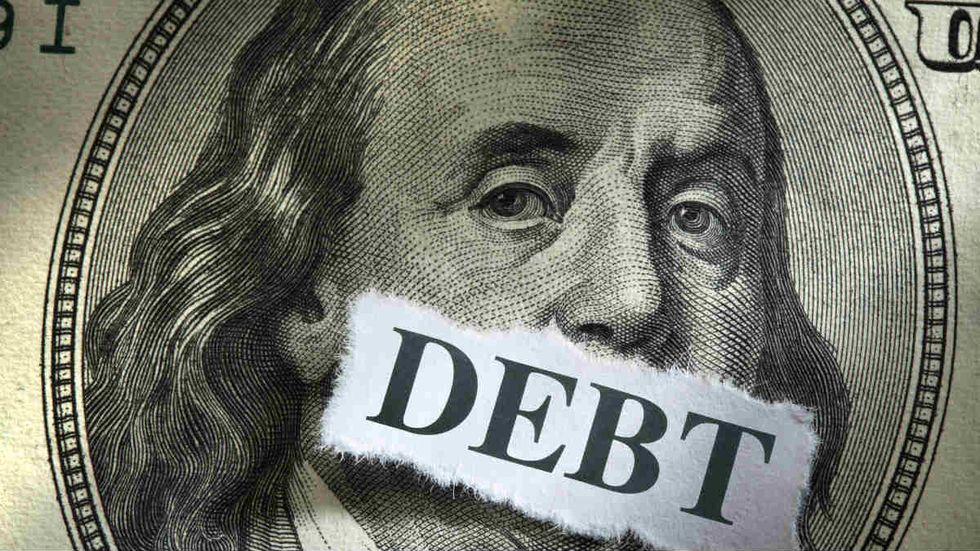
© 2024 Blaze Media LLC. All rights reserved.
We are about to embark on a perilous fiscal journey that will result in the accumulation of more debt than we racked up during World War II, but unlike during the great war, we will have nothing to show for it at the end.
Yesterday, the Committee for a Responsible Federal Budget posted an analysis showing that the budget deficit will top $3.8 trillion this year. It further found that by the end of the fiscal year, the public share of the debt will exceed the size of our economy. By the end of FY 2023, the size of the debt relative to the economy will exceed the highest levels of the WWII-era.
This dire warning already factors in an assumption that “the economy experiences a strong recovery in 2021 and fully returns to its pre-crisis trajectory by 2025.” It further assumes that no other spending bills will be passed, even though both the president and Congress have already signaled this is just the beginning.
The highest level of public debt was in 1946 when the tab topped 106 percent of GDP. 2020 began with a public debt level of 79 percent of GDP, which means the debt will grow much quicker than it did during WWII. As recently as 2008, the debt-to-GDP ratio was 32 percent.
But remember, this analysis only accounts for the public share of the gross federal debt and doesn’t include the intragovernmental debt, the other component of the total debt. Intragovernmental debt includes money owed to other federal agencies and accounts, most prominently the nonexistent Social Security Trust Fund, as well as accounts holding pensions for military veterans and government workers. When you factor in that share, the debt was already sitting at 107 percent of GDP – close to the 117% record set in 1946 – even before this crisis.
For many years, liberal economists have implored us to ignore the gross national debt, which includes the intragovernmental share, because that is money we “owe ourselves.” That in itself is a dubious argument, because we will still need to issue more (public) debt, print more money, or raise taxes to pay for SS and federal pensions – unless we cut benefits. At present, intragovernmental holdings compose nearly $6 trillion of the $24.2 trillion gross federal debt.
This is the insanity of our government spending like drunken sailors during times of prosperity. We entered WWII with a gross federal debt of 40 percent of GDP, despite the decade-long Great Depression. Now, despite a previous era of prosperity, we have entered this crisis already with 107 percent gross debt-to-GDP.
Not only are we coming from a worse place than we did pre-WWII, we are headed into a black hole. The debt we accrued during WWII was spread out over a number of years and went into making America the premier global superpower and putting people back to work. Which is why we recovered from the debt bomb over the ensuing decade. The debt we have accrued now, on the other hand, is just from one month of paying people not to work. All this money is going into a black hole.
If we are going to bankrupt ourselves with debt, why not actually do so in the form of a massive investment in regulatory reform and tax cuts, so that in the long run we will see dividends from this cataclysmic debt? Rather than spending more money, how about suspending most taxes for a year and inducing a massive deregulation surge coupled with a moratorium on immigration and foreign workers? This will induce a WWII-style investment in entrepreneurship of American workers on American soil, not just solving the economic and job problems but also the sovereignty problem that has made us so vulnerable to China and overly zealous globalization. Where is this vision from the White House and congressional Republicans?
When Congress passed the $2.3 trillion bill, Senate Majority Leader Mitch McConnell referred to it as a “wartime level of investment.” The question we all need to ask is: What exactly are we investing in?
Want to leave a tip?
We answer to you. Help keep our content free of advertisers and big tech censorship by leaving a tip today.
Want to join the conversation?
Already a subscriber?
Blaze Podcast Host
Daniel Horowitz is the host of “Conservative Review with Daniel Horowitz” and a senior editor for Blaze News.
RMConservative
Daniel Horowitz
Blaze Podcast Host
Daniel Horowitz is the host of “Conservative Review with Daniel Horowitz” and a senior editor for Blaze News. He writes on the most decisive battleground issues of our times, including the theft of American sovereignty through illegal immigration, theft of American liberty through tyranny, and theft of American law and order through criminal justice “reform.”
@RMConservative →more stories
Sign up for the Blaze newsletter
By signing up, you agree to our Privacy Policy and Terms of Use, and agree to receive content that may sometimes include advertisements. You may opt out at any time.
© 2024 Blaze Media LLC. All rights reserved.
Get the stories that matter most delivered directly to your inbox.
By signing up, you agree to our Privacy Policy and Terms of Use, and agree to receive content that may sometimes include advertisements. You may opt out at any time.



